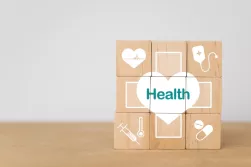Pharmacy leaders at hospitals and health systems juggle a variety of issues and activities every day. From my decades of experience, I’m familiar with the operational, clinical, financial, and regulatory responsibilities we manage. It’s challenging but rewarding.
While we can’t solve all challenges overnight, we can make progress in one area: regulatory compliance. Let’s start by focusing on accreditation. We’ll look at specific (and perhaps lesser known) standards issues I have seen surveyed, with practical strategies to prepare.
Policies and documents required for compliance
These are items I call “easy A’s,” or foundational policies you should just have in place. While they may seem like you’re just “checking a box,” if you don’t have these, your hospital may be at risk for citation. I recommend three areas to focus on:
- POLICIES: Do you have policies, SOPs, or written processes that address medication shortages, recalls, patient self-administration of drugs, investigational drug continuity, automatic stop orders, and ADRs? These are common policies that get overlooked.
- DOCUMENTS: Do you have criteria for drug selection (formulary), performance improvement plans and data?
- REGULAR REVIEW AND APPROVAL: Do you have processes in place to consistently review your formulary, LASA list, high-alert list, override lists, emergency medication supplies, policies, order sets, and standing orders?
ACTIONS TO CONSIDER:
- Policies don’t necessarily have to be full policies, but they should be written documents and must match your practice.
- Formulary demographic sheets or logs should have standardized information for each drug that is proposed for addition, and all should be filled in or marked NA to show they were considered. Work with your hospital Quality department to ensure there are medication-related PI projects being tracked and reported.
- Not all reviews are required every year but start by establishing a cadence to keep them current.
Medication security considerations
CMS says medications are secure if they cannot be accessed by unauthorized individuals. Controlled substances must be locked. These considerations are probably compliant in most of your hospital areas, but some might slip by.
- CRASH CARTS: Most of us use the breakaway numbered seals on our carts, but these ensure integrity of the drugs inside, not security. For this reason, controlled substances cannot be stored in them unless the cart is locked with a padlock, which could present a patient safety risk when trying to access emergency drugs.
- NON-CONTROLLED DRUGS: Are your crash carts under constant observation? Are they parked where they cannot be seen (like alcoves or halls)? If so, you may be at risk for non-compliance, as the seals aren’t locks and they can be opened undetected, which is a security concern.
- UNLICENSED PERSONNEL: Materials Management, EVS, and others may need to handle and/or be around non-controlled medications pursuant to performing their job duties. This is compliant, provided you have a policy that states so.
ACTIONS TO CONSIDER
- Ensure that no padlocks are used on crash carts. Any controls that might be needed during a code should be kept in separate, locked storage that can be quickly accessed.
- Placing crash carts in a locked room or in a place with close supervision will solve the challenge of unmonitored access.
- If any non-licensed individuals enter medication rooms or handle drugs as a regular activity (such as transporting cases of IV fluids), identify them in an approved policy.
Whether you’re getting ready for an accreditation survey next week or months down the road, you can never be too prepared. Compliance with the standards of accrediting bodies reduces the risk of patient harm, and isn’t that the ultimate goal?



